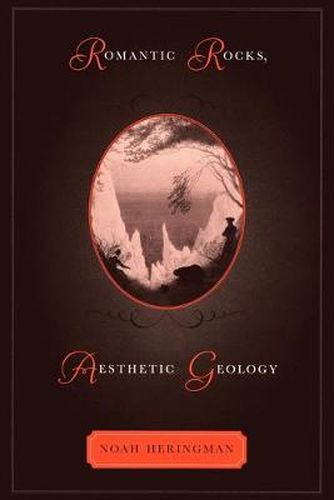Readings Newsletter
Become a Readings Member to make your shopping experience even easier.
Sign in or sign up for free!
You’re not far away from qualifying for FREE standard shipping within Australia
You’ve qualified for FREE standard shipping within Australia
The cart is loading…






Why are rocks and landforms so prominent in British Romantic poetry? Why, for example, does Shelley choose a mountain as the locus of a voice … to repeal / large codes of fraud and woe? Why does a cliff, in the boat-stealing episode of Wordsworths Prelude, chastise the young thief? Why is petrifaction, or stonifying, in Blakes coinage, the ultimate figure of dehumanization? Noah Heringman maintains that British literary culture was fundamentally shaped by many of the same forces that created geology as a science in the period 17701820. He shows that landscape aestheticsthe verbal and social idiom of landscape gardening, natural history, the scenic tour, and other forms of outdoor improvementprovided a shared vernacular for geology and Romanticism in their formative stages.Romantic Rocks, Aesthetic Geology reexamines a wide range of eighteenth- and nineteenth-century poetry to discover its relationship to a broad cultural consensus on the nature and value of rocks and landforms. Equally interested in the initial surge of curiosity about the earth and the ensuing process of specialization, Heringman contributes to a new understanding of literature as a key forum for the modern reorganization of knowledge.
$9.00 standard shipping within Australia
FREE standard shipping within Australia for orders over $100.00
Express & International shipping calculated at checkout
Why are rocks and landforms so prominent in British Romantic poetry? Why, for example, does Shelley choose a mountain as the locus of a voice … to repeal / large codes of fraud and woe? Why does a cliff, in the boat-stealing episode of Wordsworths Prelude, chastise the young thief? Why is petrifaction, or stonifying, in Blakes coinage, the ultimate figure of dehumanization? Noah Heringman maintains that British literary culture was fundamentally shaped by many of the same forces that created geology as a science in the period 17701820. He shows that landscape aestheticsthe verbal and social idiom of landscape gardening, natural history, the scenic tour, and other forms of outdoor improvementprovided a shared vernacular for geology and Romanticism in their formative stages.Romantic Rocks, Aesthetic Geology reexamines a wide range of eighteenth- and nineteenth-century poetry to discover its relationship to a broad cultural consensus on the nature and value of rocks and landforms. Equally interested in the initial surge of curiosity about the earth and the ensuing process of specialization, Heringman contributes to a new understanding of literature as a key forum for the modern reorganization of knowledge.